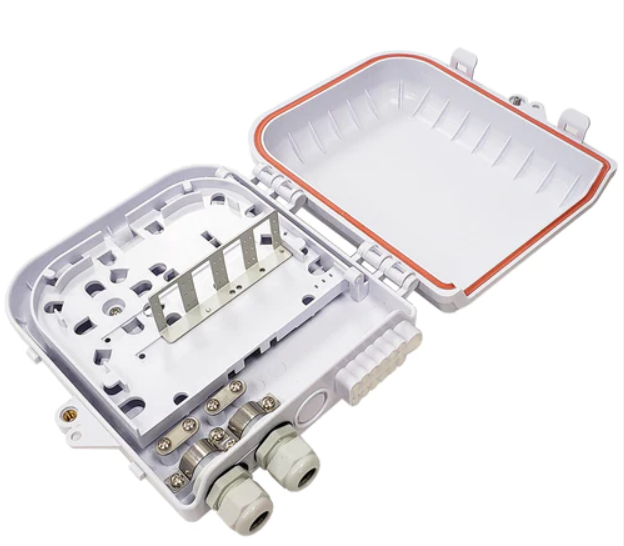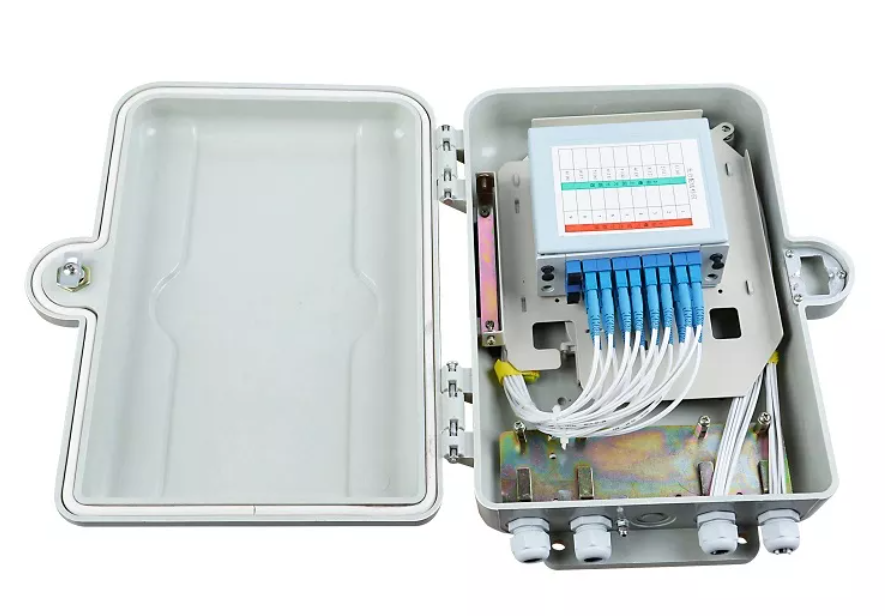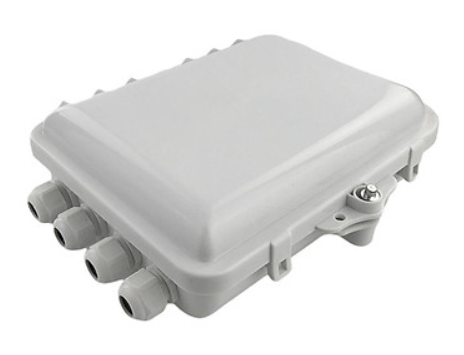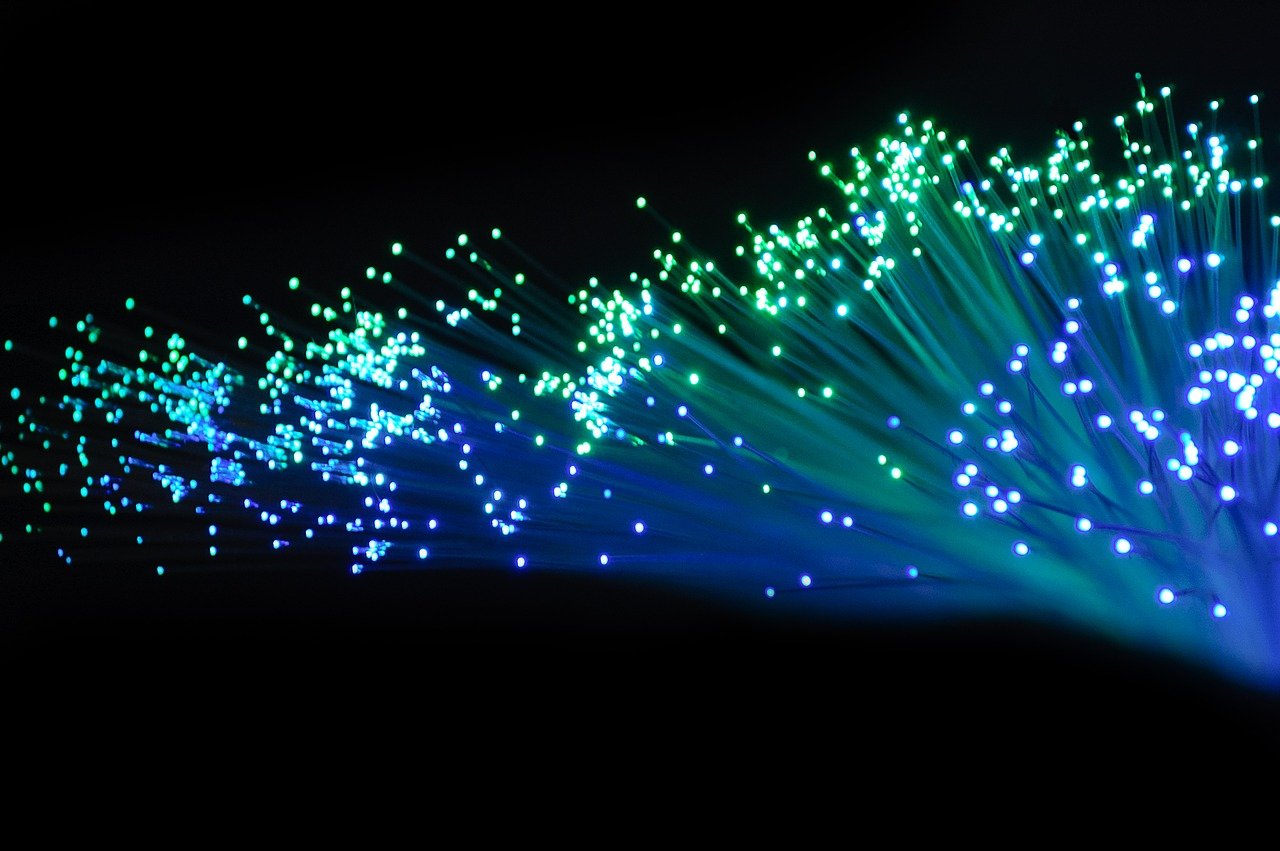Exploring Indoor Distribution Terminals for Fiber Optic

Exploring Indoor Distribution Terminals
Indoor distribution terminals are essential components in fiber optic networks, playing a crucial role in ensuring efficient connectivity. These terminals serve as the central hub for connecting various fiber optic cables and devices within a network. They provide a convenient and organized solution for managing the distribution of signals and data.
One key element of indoor distribution terminals is the fiber optic wall outlet. This outlet serves as the interface between the terminal and the external devices or cables. It allows for easy connection and disconnection of fiber optic cables, providing flexibility and convenience during installation, maintenance, and troubleshooting.
The indoor distribution terminal acts as a centralized point where multiple fiber optic wall outlets can be installed, allowing for seamless integration of different components within the network. This ensures efficient transmission of data and signals across various locations.
In summary, indoor distribution terminals are vital for maintaining connectivity in fiber optic networks. The use of fiber optic wall outlets facilitates easy access to the network, enabling smooth communication between devices and ensuring optimal performance.
Understanding Different Wall Outlet Types for Fiber Optic
Types of Fiber Optic Wall Outlets
When it comes to indoor distribution terminals, there are various types of fiber optic wall outlets available. These outlets are designed to accommodate different types of fiber optic cables and provide connectivity options for various devices.
One common type is the SC (Subscriber Connector) wall outlet. It features a square-shaped connector that provides a secure and reliable connection. Another popular option is the LC (Lucent Connector) wall outlet, which has a smaller form factor and is commonly used in high-density applications.
Other types include ST (Straight Tip), FC (Ferrule Connector), and MPO/MTP (Multi-Fiber Push-On/Pull-Off) wall outlets. Each type has its own unique features and benefits, such as ease of installation, compatibility with specific cable types, or support for higher data transfer rates.
Installation and Usage
Understanding the installation process and proper usage of fiber optic wall outlets is crucial for optimal performance and connectivity. During installation, it's important to ensure that the outlet is securely mounted on the wall or surface, providing stability and protection for the connected cables.
Proper cable management is also essential to maintain organized connections within the indoor distribution terminal. This includes routing cables neatly, using appropriate cable management accessories, and labeling connections for easy identification during maintenance or troubleshooting.
When using fiber optic wall outlets, it's important to handle the delicate fiber optic cables with care to avoid damage or signal loss. Following best practices for handling and connecting fiber optic cables helps ensure reliable data transmission and prevents potential disruptions in network performance.
In summary, understanding the different types of fiber optic wall outlets available for indoor distribution terminals allows network technicians and IT professionals to choose the most suitable option based on their specific requirements. Proper installation techniques and adherence to usage guidelines contribute to optimal performance and seamless connectivity within a fiber optic network.

A Comparative Analysis of Fiber Optic Termination Sockets
Different Types of Termination Sockets
When it comes to fiber optic termination, there are various types of sockets available in the market. Each type has its own unique design and features, catering to different applications and requirements.
One commonly used type is the SC (Subscriber Connector) socket. It features a square-shaped connector that provides a secure and reliable connection. Another popular option is the LC (Lucent Connector) socket, which has a smaller form factor and is widely used in high-density environments.
Other types include ST (Straight Tip), FC (Ferrule Connector), and MPO/MTP (Multi-Fiber Push-On/Pull-Off) sockets. These sockets offer different advantages such as ease of installation, compatibility with specific cable types, or support for higher data transfer rates.
Performance and Compatibility
Evaluating the performance and compatibility of fiber optic termination sockets is crucial for ensuring seamless connectivity and efficient data transmission within a network. Factors to consider include insertion loss, return loss, durability, and compatibility with different fiber optic cables.
Insertion loss refers to the amount of signal loss that occurs when light passes through the socket connection. Lower insertion loss indicates better signal transmission efficiency. Return loss measures the amount of reflected light back into the source due to impedance mismatch or poor connections. Higher return loss indicates better signal quality.
Durability is another important consideration, especially in environments where frequent connections and disconnections are required. Sockets with ruggedized designs or enhanced durability features can withstand repeated use without compromising performance.
Compatibility with different fiber optic cables is essential for seamless integration within a network. It's important to ensure that the termination socket matches the cable type being used, whether it's single-mode or multi-mode fiber optic cable.
In summary, comparing different types of fiber optic termination sockets allows network technicians and IT professionals to choose the most suitable option based on their specific needs. Evaluating performance metrics like insertion loss and return loss ensures optimal data transmission, while considering durability and compatibility contributes to long-term reliability within a fiber optic network.
Factors to Consider When Selecting a Fiber Optic Wall Outlet
Compatibility and Connectivity
When selecting a fiber optic wall outlet, it is crucial to consider its compatibility with the existing fiber optic network. The wall outlet should be designed to work seamlessly with the specific type of fiber optic cables and connectors used in the network. This ensures a proper and secure connection, minimizing signal loss or disruptions.
In addition to compatibility, connectivity is another important factor to consider. The wall outlet should allow for easy and reliable connectivity between different components within the network. It should provide a stable connection that can withstand vibrations, environmental factors, and frequent plugging and unplugging of cables.
Ease of Installation and Maintenance
Choosing a fiber optic wall outlet that is easy to install and maintain can save valuable time and effort. Look for outlets that come with clear installation instructions or have user-friendly features such as snap-in connectors or tool-less installation options. This simplifies the installation process, reducing the risk of errors or delays.
Regular maintenance is essential for ensuring long-term performance and reliability of the fiber optic network. Selecting a wall outlet that is easy to access and maintain allows for efficient cleaning, inspection, and troubleshooting when needed. Regular maintenance activities include checking for loose connections, cleaning connectors, inspecting cable integrity, and replacing any damaged components.
By considering ease of installation and maintenance when selecting a fiber optic wall outlet, you can streamline the setup process while ensuring ongoing performance and reliability.

Benefits of Fiber Optic Wall Outlets for Indoor Distribution Terminals
Fiber optic wall outlets offer several benefits for indoor distribution terminals. They enhance connectivity and ensure efficient data transmission within a fiber optic network. By choosing the right wall outlet, network technicians and IT professionals can achieve seamless integration of various components, leading to reliable and high-performance connectivity.
These wall outlets provide a convenient interface for connecting fiber optic cables and devices, allowing for easy installation, maintenance, and troubleshooting. They enable quick and secure connections, minimizing signal loss or disruptions. With proper installation and regular maintenance, fiber optic wall outlets contribute to long-term performance and reliability.
The use of fiber optic wall outlets also allows for flexibility in managing connections within an indoor distribution terminal. They provide organized solutions for routing cables, ensuring neatness and ease of identification during maintenance or upgrades.
In summary, the benefits of fiber optic wall outlets include enhanced connectivity, efficient data transmission, seamless integration within the network, and improved overall performance of indoor distribution terminals.
See Also
Comparison of Fiber Optic Cable Types: Single-Mode vs. Multi-Mode
Advantages of ADSS Fiber Optic Cables for Overhead Power Lines
Unveiling the Advantages of Waterproof Fiber Optic Adapters
Advantages of Waterproof Fiber Optic Cables: OptiTap MPO Multimode OM3 IP68-rated
Ensuring Compatibility and Performance: Outdoor Fiber Optic Connectors and Adapters


